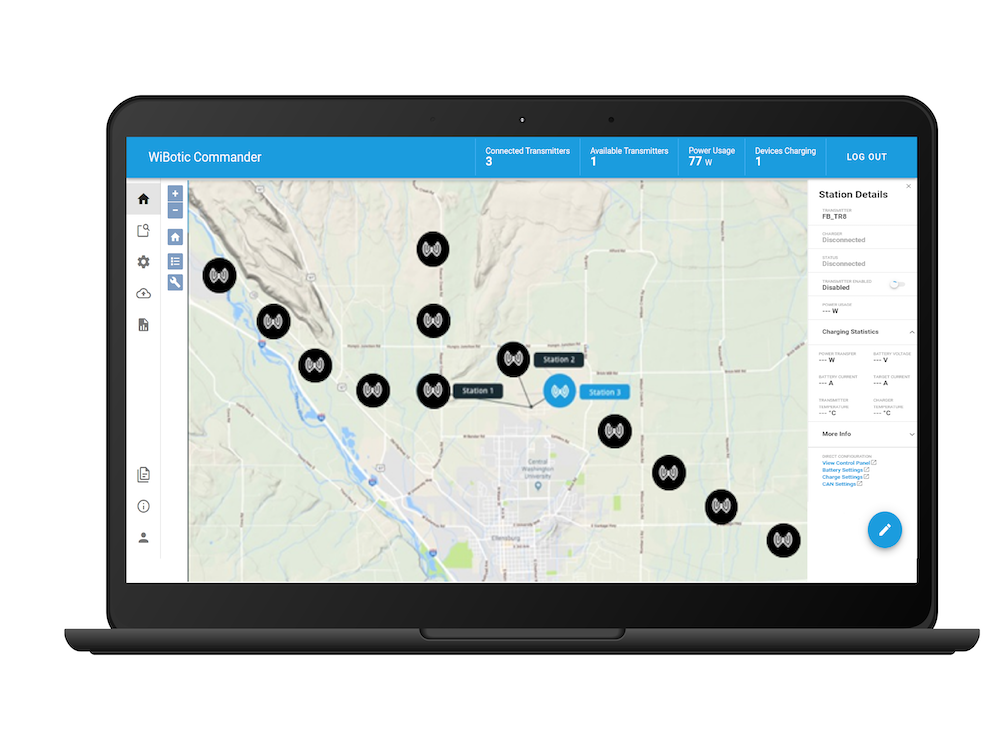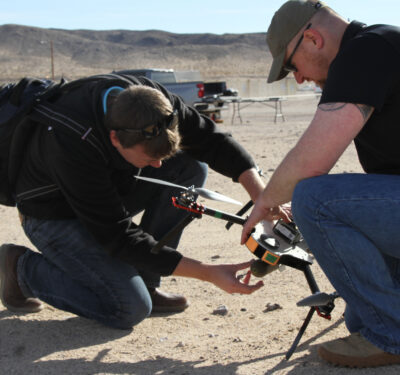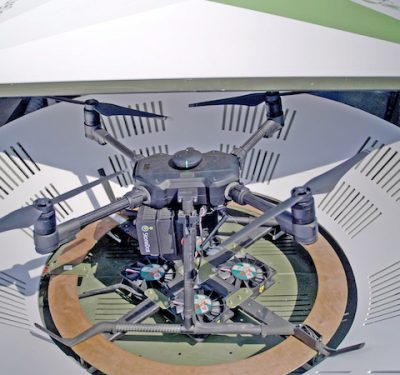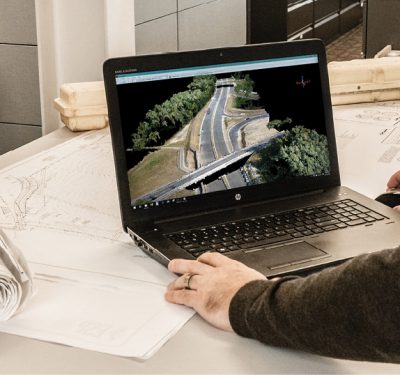 WiBotic recently introduced software designed to simplify robot fleet energy management.
WiBotic recently introduced software designed to simplify robot fleet energy management.
Commander optimizes energy delivery through large robot fleets, drones or any battery-powered device that uses WiBotic charging systems, allowing users to visualize and configure energy delivery, according to a news release. The robust API gives users the ability to fully control the charging function as part of every robot’s daily workflow.
“This year marks an inflection point for robot adoption, from mobile robots to aerial drones, even extending to underwater and space-based robots,” said Ben Waters, CEO and co-founder of WiBotic, according to the release. “Organizations that have evaluated small numbers of robots in the past are now realizing ROI, and are pivoting to scale-up. Commander was created to address these efforts by providing our customers with unparalleled insight into how their robots consume energy, how to minimize robot downtime and predict failures before they happen; even how to evaluate and compare performance across different battery types and vendors.”
Commander gives customers a “bird’s eye view” of their fleet’s charging infrastructure. This includes a display of charger availability and status as well as information on which chargers are used more than others. This makes it easy to determine optimal charger placement to maximize charging. It’s also possible to set up notifications so users are alerted when a robot isn’t charging properly.
With the software, customers can increase the lifespan of their lithium batteries by adjusting variables such as charge, voltage and speed based on each robot’s schedule. Fleet managers can set it up so robots are charged quickly during the day and more slowly at night, for example.
Commander also makes it possible to deploy a common infrastructure for all robots in a fleet regardless of battery chemistry, voltage or charge speed requirements. Detailed information about every charge cycle for every robot can be aggregated, allowing fleet managers to analyze battery performance and predict failures.
The software also makes it easy to adjust charge settings for groups of robots, as well as to benchmark battery performance across different chemistries and vendors.
All data seen in Commander can be accessed by calling the API, tying the data to the rest of the workflow.
“As we deploy larger fleets of robots, we prioritize battery charging as a point of optimization,” said Jason Walker, CEO of Waypoint Robotics, a company that has evaluated the software and that used WiBotic technology to launch its EnZone charging system, according to the release. “Robot availability and battery lifespan can be maximized if we know when, where and how fast to charge; and Commander gives us that visibility and control. Commander also makes deployment and maintenance of multiple EnZones faster and easier than ever before.”






